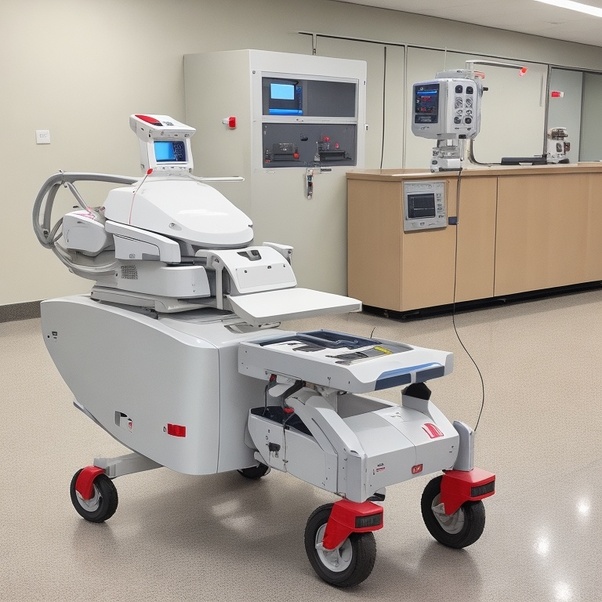The Ohio State University Medical Center (OSUMC) has developed a mobile robotic project called the Automated Transport System (ATS) to help improve operational efficiency in hospitals. The ATS includes robotic vehicles that move meals, linens, medical supplies, and trash throughout the 1,000-bed healthcare facility.
The ATS was developed in response to the challenges that hospitals face in managing their supply chains. Hospitals have to move large volumes of materials every day, and this can be a complex and time-consuming task. The ATS automates this process, freeing up staff to focus on other tasks.
The ATS vehicles are equipped with sensors that allow them to navigate the hospital environment safely and efficiently. The vehicles can also communicate with each other to coordinate their movements.
The ATS has been in operation at OSUMC since 2018, and it has been very successful. The ATS has helped to reduce the time it takes to transport materials, and it has also improved the accuracy of deliveries. The ATS has also helped to reduce the workload on staff, freeing them up to focus on patient care.
The ATS is just one example of how mobile robotics is being used to improve healthcare. Mobile robots are also being used to transport patients, deliver medications, and assist with surgery. As mobile robotics technology continues to develop, we can expect to see even more innovative applications in healthcare.
Benefits of the ATS
The ATS offers a number of benefits to OSUMC, including:
- Increased efficiency: The ATS automates the transport of materials, freeing up staff to focus on other tasks. This has led to a significant increase in efficiency at OSUMC.
- Improved accuracy: The ATS uses sensors and communication technology to ensure that materials are delivered to the correct location accurately and on time.
- Reduced workload on staff: The ATS reduces the workload on staff by automating the transport of materials. This frees up staff to focus on patient care and other important tasks.
- Improved safety: The ATS vehicles are equipped with sensors that allow them to navigate the hospital environment safely and efficiently. This has helped to reduce the risk of accidents and injuries.
- Cost savings: The ATS has helped OSUMC to save money on labor costs and transportation costs.
The future of the ATS
The ATS is still under development, and OSUMC is working to add new features and capabilities to the system. For example, OSUMC is exploring the possibility of using the ATS to deliver medications to patients. OSUMC is also working to develop a system that would allow the ATS to interact with other hospital systems, such as the electronic health record system.
The ATS is a promising example of how mobile robotics can be used to improve healthcare. As mobile robotics technology continues to develop, we can expect to see even more innovative applications in the future.
Conclusion
The mobile robotic project at OSUMC is a great example of how technology can be used to improve healthcare. The ATS has helped to improve efficiency, accuracy, safety, and cost savings at OSUMC. As mobile robotics technology continues to develop, we can expect to see even more innovative applications in healthcare in the future.
- #OSUMedicalRobotics
- #OhioStateRobotics
- #MedicalRobotProject
- #RobotsInHealthcare
- #OSUInnovation
- #HealthTechResearch
- #MobileRobots
- #MedicalAutomation
- #RoboticsInMedicine
- #OSUMedTech
- #FutureOfHealthcare
- #RobotAssistedSurgery
- #MedCenterInnovation
- #TechInMedicine
- #OhioStateResearch
- #HealthcareInnovation
- #RoboticSolutions
- #MedTechAdvancements
- #OSUResearch

